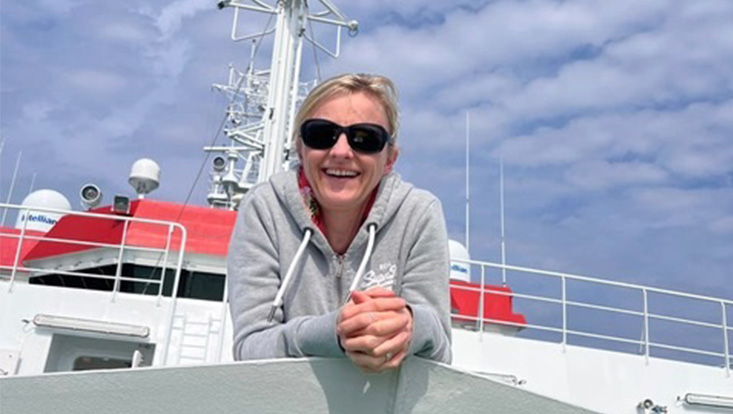When the Fish in the Port Run Out of Air
16 September 2020, by Mathias Spieckermann, CEN Universität Hamburg

Photo: Christin Woodford
In Hamburg’s port, you can sometimes see fish gasping for air just below the water’s surface. This is a sign that there isn’t much oxygen in the water. This becomes life-threatening for them when the level falls below three milligrams of oxygen per liter. In summer 2014, the level was below this value for several days. The newspapers reported a massive fish kill in which 100 metric tons are said to have died.
One reason for this was the high temperatures in summer, which can be exacerbated by climate change: the warmer a body of water is, the less oxygen dissolves in it. Furthermore, at warmer temperatures, more algae grow in the Middle Elbe. These are then transported downriver to the deeper Tidal Elbe. Whereas algae in shallow waters produce oxygen, at greater depths they don’t have enough light to do so. They die and are broken down, a process that removes substantial amounts of oxygen from the water.
The oxygen balance is upset when more oxygen is used as a result of breathing or the breakdown of organic substances than is supplied by the air or photosynthesis. To what extent and in what proportions the sub-processes play a role here is still unclear. It is also still largely unknown what influence the sediments in the riverbed have on the oxygen balance. At the Center for Earth System Research and Sustainability (CEN) I am investigating how much oxygen the sediments consume, and which factors determine oxygen consumption.

Sediments are made up of mineral particles and organic material such as decayed plants and algae. Their oxygen consumption is governed by chemical and biological processes. Microorganisms in the sediment consume oxygen when they break down organic components, or add oxygen-consuming substances to the pore water. When ships, excavators, or currents stir up the sediments, chemical compounds are released, which then cause oxygen consumption to rise dramatically.
In order to investigate this phenomenon more closely, I conducted various laboratory experiments using fresh sediment: I determined the oxygen consumption and the chemical and physical properties of the sediment in the port, and investigated how the concentration of various substances changed after seven days: based on the altered concentrations of ammonia, nitrite, nitrate, sulfate, iron and manganese in the water, I determined what effect individual processes had on oxygen consumption.

Over two years, I took monthly samples in the Port of Hamburg. My laboratory investigations showed that, under certain conditions in summer, oxygen consumption is up to five times higher than in winter – especially at a depth of up to twenty centimeters. In addition, I also investigated the sediments from 21 different locations between Stover Strand in the east and Wedel in the west. The sediment in the port’s shipping channel consumed the least oxygen. This is chiefly due to the large proportion of sand: hardly any organic material, which can consume oxygen, settles on the sand grains.
In my study I was able to identify the factors that control the sediments’ oxygen consumption. Further, I determined the biochemical processes involved and how much they contributed to total oxygen consumption. Using this data, we developed a model that allows us to predict the oxygen consumption of sediments based on a given known parameter. This approach will help us to better understand the underlying processes and to improve current models.
Mathias Spieckermann
Mathias Spieckermann completed his doctoral thesis at Universität Hamburg’s Institute of Soil Science.
Newspaper
This article was first published as a guest article in the Hamburger Abendblatt as part of a monthly series on climate research. Find all articles of the series here.


